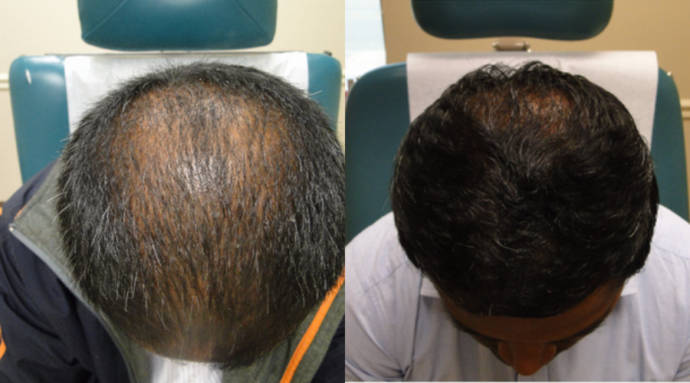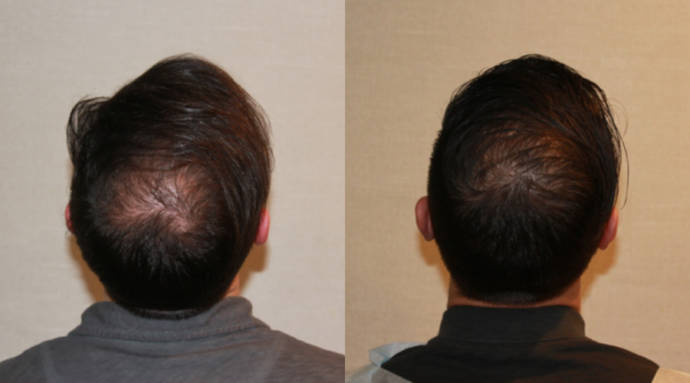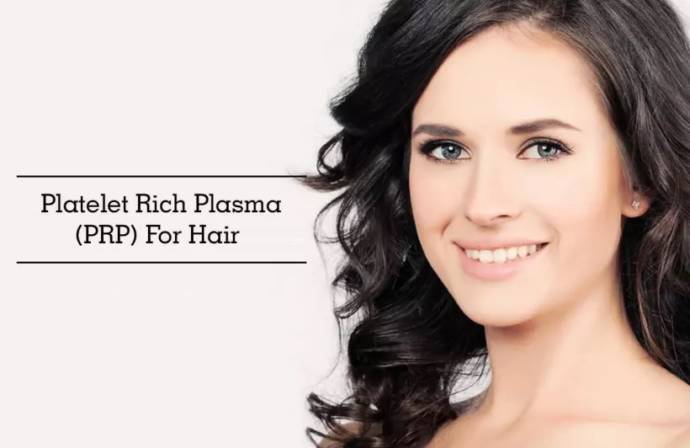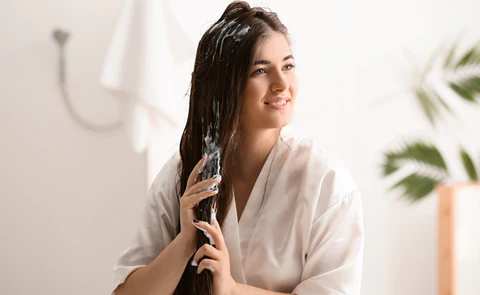A. What is it?
- History of platelet-rich plasma: What’s the first thing that comes to your mind when you hear about platelets? The majority quickly think about bleeding or clotting. As you know platelets are part of the blood and help prevent a wound from bleeding out, working together with other clotting processes. Well, in the 90s scientists discovered that platelets have growth factors and anti-inflammatory agents that can be used to regenerate tissues in vivo, and it worked! This discovery found its way into the cosmetic field where platelet-rich plasma (PRP) is used to regenerate scalp hair, restoring a smile to those who want to keep their precious hair.
- How PRP is made: To make this PRP, blood is spun at high speed by a process called centrifugation, thus separating plasma from the rest of the blood components. This plasma forms a supernatant which is packed with platelets, hence the term platelet-rich plasma.
- The active agents in platelets
- Growth factors: These platelets are rich in growth factors, like platelet-derived growth factor, transforming growth factor, epidermal growth factor to name a few. When they are introduced to your scalp hair stem cells they get to work, having a potent ability to stimulate stem cells in the scalp. As a result, this opened doors to a wide variety of medical applications consisting of any condition where there is loss of stem cell ability to regenerate. There is now hope for those with receding hair lines or with balding, where stem cells of scalp hair follicles degenerate and lose their ability to replenish the hair.
- Anti-inflammatory factors: It doesn’t end there. The other way in which these platelet-derived agents help in treating hair loss is the presence of anti-inflammatory factors. There are conditions and substances that cause chronic inflammation in the scalp. This disturbs the supporting structures of the hair in the scalp and in some cases the body even mounts an immune attack against the hair follicles, causing hair loss. Examples of these offending agents include cigarette smoke, inflammatory skin diseases and other systemic conditions like Diabetes Mellitus.
Inflammation is destructive and may lead to scarring in the skin and PRP counters this with hepatocyte growth factor (HGF), which has anti-inflammatory properties hence promotes healing of the scalp skin. You can see how important this 90s discovery was in the world of medicine and cosmetology.
B. BENEFITS OF USING ONE’S OWN PRP (AUTOLOGOUS)
One important advantage is that it’s all natural and there is no chance of you reacting to your own plasma. If it was made in the laboratory or extracted from an animal, people with risk of hypersensitivity reactions would not qualify for the treatment. This characteristic of being natural makes it easier and cheaper to make. Yes, the cost of doing the actual procedure may be steep for some but if PRP was made from another source, the cost was going to be even higher. Any side effects that may occur are due to external factors as discussed in a section below.
C. PRP IN COSMETICS: SCALP HAIR LOSS
In cosmetics, this wonderful discovery has enabled dermatologists and aestheticians to successfully manage cases of scalp hair loss and hair thinning.
How it works
- Preparation of scalp: PRP treatment of the scalp is used in conjunction with a procedure called microneedling to achieve maximum benefit. In microneedling, a special instrument called a microneedle pen is used and has multiple fine needles to puncture the scalp. These needles are spring-loaded, using an automatic, vibrating stamp-like motion to puncture the scalp repeatedly. The skilled hand of a practitioner gently guides the pen over the area on the scalp to be treated, making sure it is adequately covered. Don’t worry, the needle and tip are disposable hence the risk of cross-infection is eliminated.
- Applying PRP on scalp: After microneedling, the activated PRP is delivered into the scalp usually via a needle and it penetrates deep down to the roots of the hair. The whole procedure takes a few minutes but may go up to 30 minutes if the area to be treated is large. After completion of the procedure, the doctor applies a soothing product, with anti-inflammatory properties, on the scalp.
- Care after procedure:
Do’s
After PRP scalp treatment, what’s important is to follow the instructions given by the practitioner, that is, what to avoid. You can go home and rest as the PRP is absorbed into the scalp.
Don’ts
It is recommended that after microneedling and PRP application, you avoid anything that triggers inflammation of the scalp hence cause discomfort or irritation. This includes:- Going out into the sun. The sun emits ultraviolet radiation which causes skin damage and inflammation of the scalp.
- Engaging in activities that cause sweating like sauna. This triggers sweating and sweat is pro-inflammatory which causes discomfort of the area treated.
- Using oil-based skin products that remove the natural oils of the scalp causing irritation.
- Swimming.
- Follow up: You may need to come for repeat session four to six times depending on what your doctor recommends. In each of these visits, the whole process of microneedling and application of PRP on the scalp is done. Fortunately, the procedure doesn’t take long and once you have undergone the first session, your anxieties will be alleviated.
- When does the scalp hair regrow?: They say patience is a virtue, and it applies to the regeneration of hair. Expect results after at least 6 months. Fortunately, the majority of clients get favourable results and with a background of previous successful cases, it’s easy to stay upbeat.
Side effects of the scalp procedure
Both stages of the process are safe, that is, the microneedling part and the injection of PRP. The topical anaesthetic helps numb the pain during the procedure. A temporary itching or numbness is normal after the procedure but it will go away. It’s important to follow the post-procedure instructions listed above so that there is no inflammation of the scalp agreed Hair and Skin Science Melbourne
Cost
- Factors affecting cost: Since PRP application is done after preparing the scalp with microneedling, you can’t run away from the cost of the latter process. Hair regeneration is a cosmetic procedure so most insurance companies don’t cover for it. This makes it expensive because you have to dig into your purse to make the payment. The total cost depends on:
- Area being treated
- The size of the area being treated
- Number of sessions you have to attend
- Any follow ups that may need to be done
- Comparison with other procedures for scalp hair treatment: The average costs of microneedling alone ranges from USD$200 to USD$700 per each session and you need 4 to 6 sessions which further inflates the figure. With the addition of PRP, total figure becomes much higher. In America PRP treatment may cost as much as USD$900 per session. Compare with other options of treating scalp hair loss below:
- Scalp hair transplant costs at least USD$4000 and may rise to USD$10000 if the area to be treated is large. Results are excellent.
- Low-level laser light therapy total cost of all sessions can reach USD$5000 but results are inconsistent, as compared to PRP.
- Medications can come in the foam of topical foams or creams, or oral medications. They are much cheaper e.g. cost of topical Minoxidil is around USD$20, but these medications are less effective than PRP and have more side effects. Results are also inconsistent.
PRP before and after pictures










